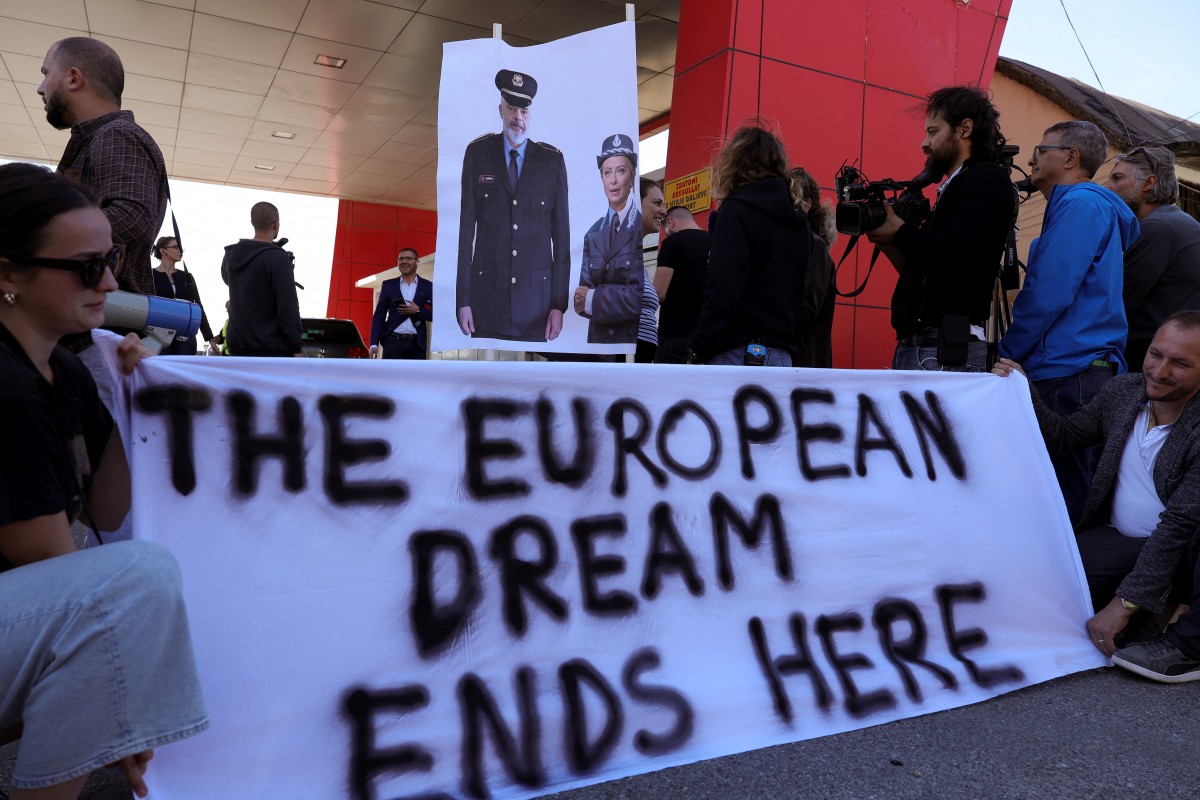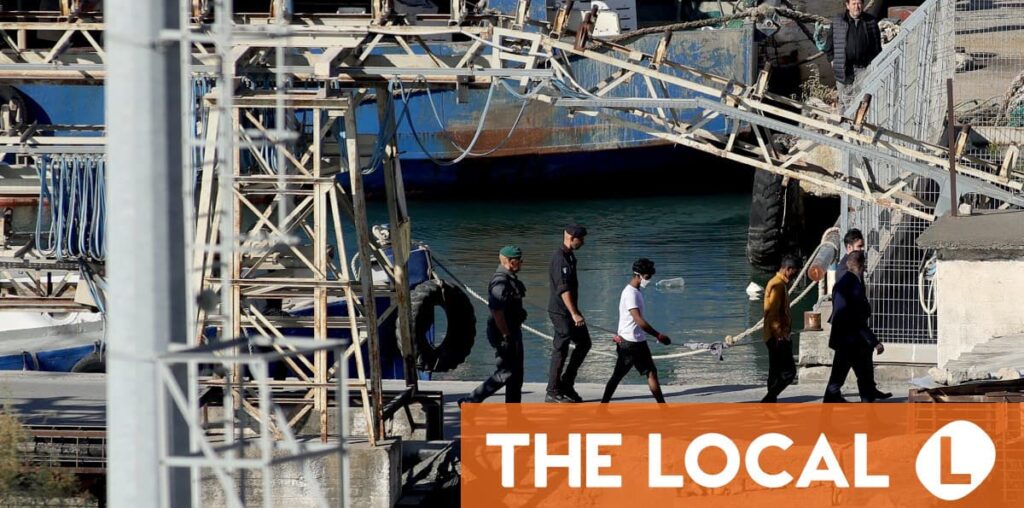Sixteen men from Bangladesh and Egypt disembarked from an Italian navy vessel at the Shengjin port shortly before 10am, AFP journalists saw.
The men were escorted in small groups toward the gates of the centre just a few metres from the vessel, which left the port at midday.
Amnesty International has called the centres a “cruel experiment [that] is a stain on the Italian government”.
Italy will run two migrant centres in Albania surrounded by high walls and security cameras: one in Shengjin and the other one in Gjader, 20 kilometres from the port.
The centres will be operated under Italian law, with Italian security and staff, with judges hearing cases by video from Rome.
More than 300 Italian soldiers, doctors and judges are involved in the operation, according to Italian diplomats.
After disembarking in Shengjin, the migrants will be registered and undergo health checks before being transferred to the Gjader centre.
There they will be accommodated in prefabricated houses of around 12 square metres and await processing of their asylum claims.
Cells have been set up on site for applicants whose asylum requests are refused.
Advertisement
On Wednesday, several civil rights activists gathered near the centre in Shengjin carrying a large banner that read in English: “The European Dream Ends Here.”
They also held photos of Italian Prime Minister Giorgia Meloni and her Albanian counterpart Edi Rama dressed as police officers.

A group of human rights activists gather in protest after the arrival of the first group of migrants intercepted in Italian waters in the Shengjin port, northern Albania. Photo by Adnan Beci / AFP
Human rights groups question if there will be sufficient protection for asylum seekers and have expressed doubts as to whether the move complies with international law.
But Meloni brushed aside criticism in comments on Tuesday.
“It is a new, courageous, unprecedented path, but one that perfectly reflects the European spirit and has everything it takes to be followed also with other non-EU nations,” she said.
The arrangement between the two countries is a European first, which other leaders in the region are watching closely.
The migrants’ arrival in Albania comes ahead of a European Union summit in Brussels this week where migration is on the agenda.
In a letter to member states ahead of the talks, European Commission chief Ursula von der Leyen said the bloc would “be able to draw lessons from this experience in practice”.
Advertisement
The project was agreed in a November 2023 deal between Meloni and Rama. Set to last five years, it will cost Italy an estimated 160 million euros a year.
That money “could have been used for public health to reduce waiting lists, but we are throwing it out the window to deport migrants and trample on their rights”, Elly Schlein, leader of Italy’s centre-left Democratic Party, said in an interview with Il Corriere della Sera on Wednesday.
The migrants intercepted in Italian waters who are deemed the most vulnerable such as women and children are due to be taken to Italy.
Albania’s centres will have a capacity of 1,000 people initially, ultimately reaching 3,000.
Its critics say that given such numbers, the scheme cannot be justified.
“Over the last three days, more than 1,600 migrants have landed in Italy,” migration researcher Matteo Villa of Datalab Europe posted on X.
“An Italian navy vessels is taking 16 to Albania. I don’t think I need to add anything else.”

